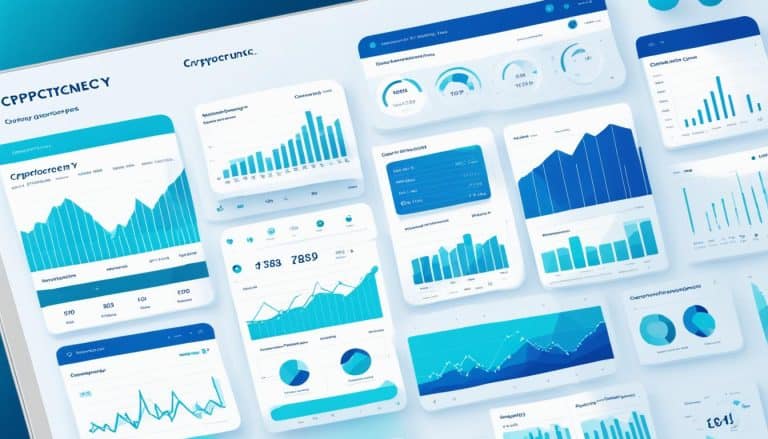Top Predictive Modeling Techniques
Predictive modeling is a powerful tool for data analysis that can be used in many different applications. It’s especially useful for businesses and organizations that need to make decisions based on insights from the data they have collected. In this article, we will explore some of the top predictive modeling techniques so you can get a better understanding of how they work and which one might be best for your needs. From linear regression to reinforcement learning, there are plenty of options available to help you uncover meaningful patterns in your data. We’ll cover each one in detail so you can decide which technique is right for you.
Linear Regression
Linear regression is the go-to technique for predicting outcomes, letting you easily see how changes in one variable affect another. The linear dynamics of this predictive modeling technique make it a great choice when you’re trying to understand relationships between your data points and form predictions based on that information. Regularization techniques like ridge and lasso regression can also be used to improve the accuracy of linear regressions, both by reducing overfitting and helping to identify which variables are most relevant to your prediction. This makes linear regression an incredibly useful tool for discovering patterns within data as well as making predictions about future outcomes. As such, it is a valuable part of any predictive modeling workflow.
Moving on from linear regression, logistic regression is another powerful predictive modeling technique that offers more nuanced results than its older counterpart.
Logistic Regression
Logistic Regression is a powerful tool for making predictions, allowing you to identify the probability of an outcome occurring. It can be used to help make decisions based on the implications of logistic regression and its predictive implications. By analyzing data and its associated probabilities, Logistic Regression allows us to use this information to generate useful insights about our data and how it relates to different outcomes. This makes it especially useful in determining trends in data that may not be easily visible when looking at raw numbers alone. With this knowledge, we can then move on to further analyze our data with other predictive modeling techniques such as decision trees.
Decision Trees
Decision Trees are powerful tools for making decisions and discovering patterns in data. Decision trees are structured as a set of if-then rules that enable us to make decisions based on the input variables. These rules can become quite complex, so decision tree optimization techniques are used to reduce the complexity and improve accuracy. A common technique is pruning, which removes unnecessary branches from the tree to reduce its size and increase predictive accuracy. Another approach is model selection, which involves choosing the best decision tree algorithm for a particular problem.
These techniques can be used together with other methods like regularization or feature selection to further improve accuracy and performance of decision trees. With these powerful tools, businesses can leverage predictive modeling to gain insights into customer behavior and develop effective strategies for their products or services. Having explored the advantages of logistic regression, we now turn our attention to Support Vector Machines as an alternative approach for predictive modeling.
Support Vector Machines
Support Vector Machines (SVMs) are a powerful way to make accurate decisions and uncover patterns in data. SVMs have been used for many different types of predictive modeling, including classification, regression, and anomaly detection. An advantage of using SVM models is that they provide a high degree of flexibility when it comes to model selection and feature engineering. It’s also possible to apply various kernel functions to the data in order to increase the accuracy of the predictions. This makes SVMs an ideal tool for tackling complex problems with large datasets. With enough domain knowledge, an experienced practitioner can customize their SVM models to achieve excellent results on their specific dataset. Moving away from SVMs now, another popular technique for predictive modeling is naïve bayes.
Naïve Bayes
Naïve Bayes is an intuitive and efficient way of making predictions that’s easy to understand and implement. It makes use of Bayes theorem to come up with probability-based predictions by considering past data. Naïve Bayes algorithms are used in a wide variety of applications, including spam filtering, text classification, sentiment analysis and recommendation systems.
The algorithm works by computing the conditional probability for each class given the input features. It then selects the class with the highest posterior probability given the inputs. Naïve Bayes has been successfully applied in medical diagnosis and document categorization due to its simplicity and high accuracy levels. With its ability to handle multiple classes easily, it is one of the most popular predictive modeling technique employed today. To move on from here, let’s look at k-nearest neighbors – another common machine learning algorithm used for prediction tasks.
K-Nearest Neighbors
K-Nearest Neighbors, or KNN, is an incredibly powerful tool for making predictions with high accuracy! It uses a supervised machine learning algorithm that can be used for both classification and regression. The basic idea behind KNN is to find the most similar data points in the training set and use them to predict the output. This approach is useful for tasks such as image recognition and natural language processing.
| The advantage of KNN lies in its ability to capture nonlinear relationships between variables. It also has several applications in marketing, finance, and engineering. In addition, it is easy to implement due to its simple structure which makes it fast and accurate. | Applications | Advantages |
|---|---|---|
| Image recognition | Nonlinear relationship capturing | Easy implementation |
| Natural language processing | Marketing | Fast & accurate |
| Finance | Engineering |
KNN can be used effectively when dealing with small datasets or when you don’t have any prior knowledge about the data. With its power and flexibility, it’s no wonder why KNN has become one of the most popular predictive modeling techniques! Moving forward, we’ll explore another powerful technique: random forests!
Random Forests
Moving on from K-Nearest Neighbors, another prevalent predictive modeling technique is Random Forests. A random forest is a supervised machine learning algorithm that works by building multiple decision trees and combining them together to form a model. Each individual decision tree consists of nodes which represent different conditions, with each condition leading to a specific outcome. The random forest takes the output from each individual tree and combines them together in order to get an overall prediction for the model. This approach leads to more accurate predictions than just using one single decision tree alone.
The power of Random Forests lies in its ability to handle large amounts of data and its feature engineering capabilities through rule mining techniques. Feature engineering is the process of extracting meaningful information from raw data inputs which can then be used as inputs into the model itself. Rule mining techniques are used to identify possible relationships between variables in the dataset which can then be incorporated into the feature engineering process. By utilizing these two processes, Random Forests can generate highly accurate models even when dealing with datasets containing hundreds or thousands of features.
Neural Networks
You’ve likely heard of Neural Networks before – they’re powerful machine learning algorithms that can make complex predictions by building multiple layers of interconnected nodes. Neural Networks are a type of deep learning algorithm, and are often used to create highly accurate models for artificial intelligence applications. Here are some key points about Neural Networks:
- They’re able to capture nonlinear relationships between input and output variables.
- They automatically detect correlations between variables without any prior knowledge or feature engineering.
- They learn the best features from data as they process it, allowing them to adapt to different scenarios with minimal human intervention.
Neural Networks have become increasingly popular in predictive modeling due to their ability to quickly identify complex patterns in data, making them an ideal tool for tasks such as image recognition and natural language processing. As we move into the next section on boosting algorithms, we will explore how these techniques can be used together with Neural Networks to further improve performance and accuracy.
Boosting
Boosting algorithms are a powerful tool for creating more accurate predictions in machine learning. By combining multiple weak models, boosting algorithms can reduce bias and variance to provide improved prediction accuracy. Boosting also works well with high-dimensionality data by implementing feature selection or dimensionality reduction techniques. This helps improve the performance of the algorithm while simultaneously reducing overfitting due to features that have little predictive power. Additionally, boosting algorithms require careful feature engineering and parameter tuning which can be used to further increase accuracy of predictions. As such, boosting is an effective technique for improving the performance of predictive models through careful analysis and optimization of model parameters. With this approach, it is possible to achieve a much higher level of accuracy than would be otherwise possible with a single model alone. Smoothly transitioning into the next topic, association rules are another powerful technique for predictive modeling tasks.
Association Rules
Are you ready to take your data analysis to the next level? Association Rules are here to make it happen! This predictive modeling technique combines data mining and rule mining techniques, which allows for advanced insights into your data. By uncovering relationships between items in large datasets, this powerful tool can help identify correlations that would otherwise go unnoticed.
Some of the advantages of using Association Rules include:
- Improved accuracy of predictions
- Uncover hidden patterns in data
- Aid in understanding customer behavior.
Wouldn’t it be great to gain deeper insights into customer buying habits? With Association Rules, you can do just that! And with better understanding come more effective decisions that can lead your business down the path of success. Now let’s explore another predictive modeling technique – clustering.
Clustering
Moving on from association rules, clustering is another type of predictive modeling technique that is usually used to group data points according to similarities. This unsupervised learning approach relies heavily on optimization algorithms and data mining for efficient results. Clustering algorithms are mainly used in business applications such as marketing segmentation, customer profiling, and fraud detection. By grouping similar customers together, businesses can better understand the needs of their customers and identify potential opportunities for improvement or growth. Additionally, clustering helps to identify outliers within a dataset which could be indicative of fraudulent activities or other irregularities that need further investigation. With its ability to quickly analyze large datasets, clustering proves to be an invaluable tool in predictive modeling. Now that we have looked at clustering techniques let us move onto time series forecasting and explore how it can be used in predictive modeling.
Time Series Forecasting
Time series forecasting is a powerful tool to help you gain insights into the future and make better decisions. It is a subset of predictive modeling that involves analyzing data points collected over time to identify patterns, trends, and seasonality in order to predict future events. Time series forecasting models are particularly useful for understanding the past behavior of a system in order to forecast its future behavior.
An important part of time series forecasting is understanding how arithmetic forecasting works, as well as recognizing seasonal variations. Arithmetic forecasting looks at historical data points and calculates an average value for each time period, while seasonal variations involve looking at the differences between recent values and long-term averages over multiple cycles or seasons. By combining these two techniques together, it is possible to accurately forecast future outcomes with greater accuracy than either technique would be able to achieve on its own.
Markov Chains
Markov chains are a powerful tool for predicting future outcomes based on past events. The basic premise of Markov Chains is that the probability of transitioning to any state in the future depends only on the current state and not on any previous states. This means that Markov Chains can be used to analyze complex systems with many variables, since they don’t require an exhaustive analysis of all possible paths taken by the system. Furthermore, since each transition requires minimal memory requirements, Markov Chains can achieve high complexity without sacrificing much in terms of computational power or storage capacity. Consequently, they are often used for predictive modeling techniques such as forecasting market trends or predicting customer behavior.
In addition to these advantages, Markov Chains also have certain limitations when it comes to predictive modeling applications. For instance, they assume that all transitions follow a stationary process over time, which may not always hold true in real-world scenarios where changes in external factors can cause non-stationary behavior. As such, while Markov Chains remain a powerful technique for predictive modeling tasks, they should be used thoughtfully and with caution when dealing with real-world data sets. With this in mind, we now turn our attention towards ensemble methods as another potential tool for achieving accurate predictions from data sets.
Ensemble Methods
Ensemble methods offer an alternative approach for making accurate predictions from data sets, allowing researchers to combine the power of multiple models to produce better results. This technique works by combining different models together and then optimizing them through ensemble optimization or by performing model fusion.
Unlike single-model approaches, ensemble methods provide enhanced accuracy and performance due to their ability to capture non-linear relationships in complex datasets. Through this technique, researchers are able to leverage the strengths of a variety of models in order to make more accurate predictions than any individual model could independently. As a result, reinforcement learning becomes an important consideration as it can improve the accuracy further by leveraging additional data points for training and testing purposes.
Reinforcement Learning
Moving on from Ensemble Methods, Reinforcement Learning is another powerful predictive modelling technique. It is a type of machine learning that allows algorithms to make decisions in an environment by maximizing rewards and minimizing punishments. This technique can be used to solve various problems such as robotics, natural language processing, autonomous systems engineering and more.
To use reinforcement learning for predictive modelling, data exploration and feature engineering are crucial steps. Data exploration helps the algorithm identify patterns and relationships among data points which will then help it make decisions in different situations. Feature engineering involves creating new features based on existing ones to improve model accuracy. Finally, hyperparameter optimization tunes the parameters of the model for better performance. Overall, reinforcement learning can become a highly effective tool when used properly for predictive modelling tasks.
Frequently Asked Questions
What is the best predictive modeling technique for my project?
It depends on your project goals. Consider the cost benefits and model accuracy for the techniques available, then select the one that best fits your needs.
How do I know when to use a specific technique?
You can decide which predictive modeling technique to use by considering the correlation between variables and the purpose of the predictive analytics. Analyze each variable’s relationship and select a technique accordingly.
How long will it take to learn predictive modeling?
The time investment required to learn predictive modeling depends on your experience and the complexity of the data you are exploring. Generally, it can take weeks or months to gain a thorough understanding of these techniques.
How do I choose the right data set for predictive modeling?
When choosing a data set for predictive modeling, it’s important to explore the available data. Consider factors like machine learning algorithms used and how accurate they are with your data. Analyze the features of the data to determine which ones are most relevant and helpful for prediction.
What is the difference between supervised and unsupervised learning?
You’re comparing two types of learning: supervised and unsupervised. Supervised requires labeled data and model evaluation; unsupervised relies on data visualization. Both have their own strengths and weaknesses, so consider carefully which one fits your needs best.





 Bitcoin
Bitcoin  Ethereum
Ethereum  Tether
Tether  XRP
XRP  USDC
USDC  TRON
TRON  Lido Staked Ether
Lido Staked Ether  Dogecoin
Dogecoin  Figure Heloc
Figure Heloc  Cardano
Cardano  Bitcoin Cash
Bitcoin Cash  WhiteBIT Coin
WhiteBIT Coin  Wrapped stETH
Wrapped stETH  Wrapped Bitcoin
Wrapped Bitcoin  USDS
USDS  Wrapped eETH
Wrapped eETH  Chainlink
Chainlink  Binance Bridged USDT (BNB Smart Chain)
Binance Bridged USDT (BNB Smart Chain)  Zcash
Zcash  Monero
Monero  WETH
WETH  LEO Token
LEO Token  Stellar
Stellar  Coinbase Wrapped BTC
Coinbase Wrapped BTC  Ethena USDe
Ethena USDe  Hyperliquid
Hyperliquid  Litecoin
Litecoin  Avalanche
Avalanche  Sui
Sui  Hedera
Hedera  Canton
Canton  Shiba Inu
Shiba Inu  USDT0
USDT0  sUSDS
sUSDS  Dai
Dai  Toncoin
Toncoin  World Liberty Financial
World Liberty Financial  Uniswap
Uniswap  PayPal USD
PayPal USD  Cronos
Cronos  Ethena Staked USDe
Ethena Staked USDe  Mantle
Mantle  USD1
USD1  Polkadot
Polkadot  Rain
Rain  MemeCore
MemeCore  Bitget Token
Bitget Token  Aave
Aave